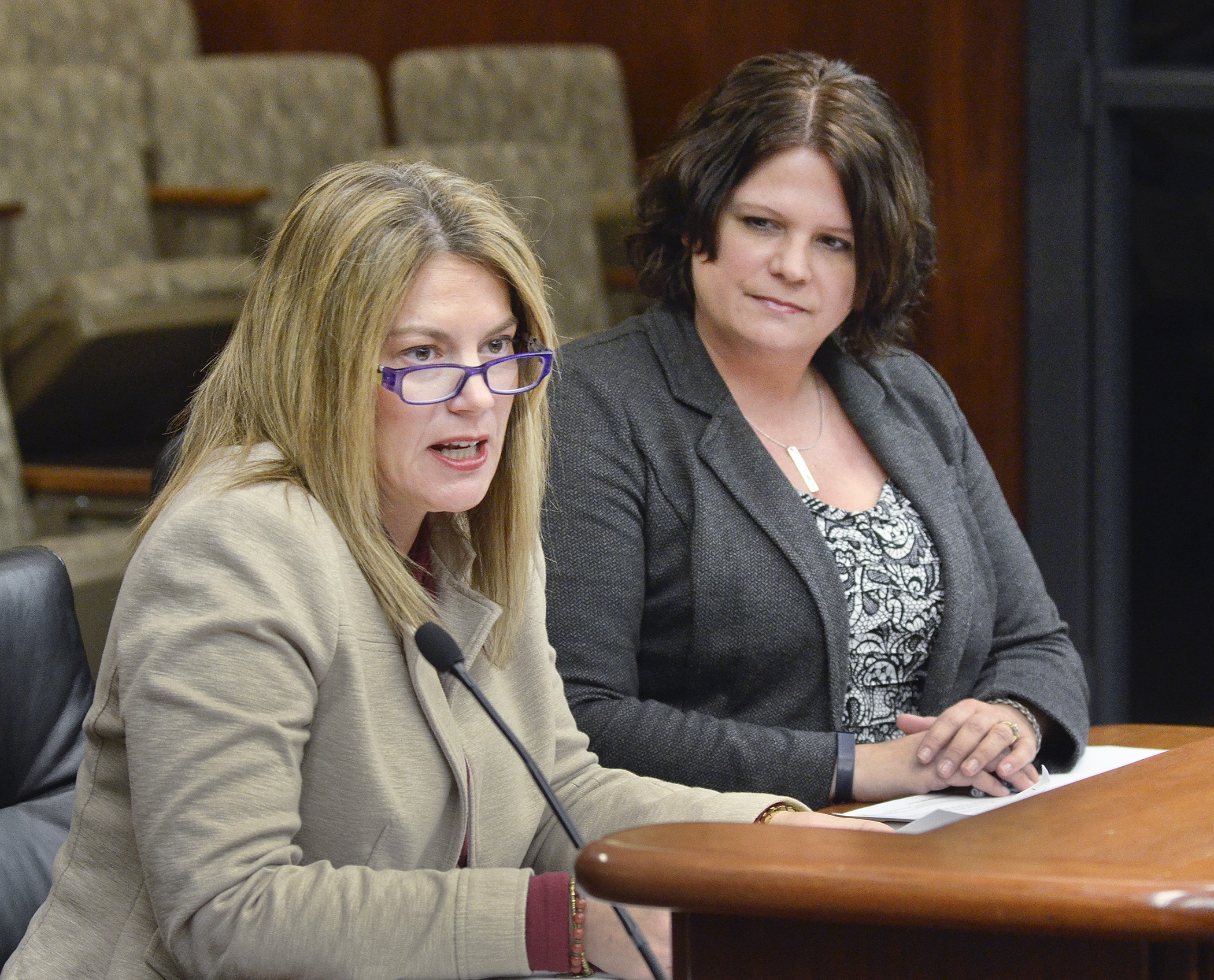Technology funding proposed to help find people who wander off

People with severe autism and older adults with dementia or Alzheimer’s disease are subject to wandering off and forgetting how to return home, according to legislators who are proposing various alert systems to find lost children and adults.
On Wednesday, the House Aging and Long-Term Care Policy Committee approved two related bills and held one over for more discussion. Committee members reacted with personal antidotes of neighbors or loved ones gone astray, but worried that the public may tire of frequent alerts, lessening their effectiveness.
HF805, sponsored by Rep. Cheryl Youakim (DFL-Hopkins), would establish a group to study a “Silver Alert” system to aid in recovering missing persons with dementia, traumatic brain injury, Alzheimer’s disease or other mental disabilities. The committee referred the bill to the House Government Operations and Elections Policy Committee after adopting a technical amendment. SF857, a companion sponsored by Sen. Kathy Sheran (DFL-Mankato), awaits action by the full Senate.
Patterned after the Amber Alert system, the bill would bring numerous health and safety representatives together to make a recommendation to the Legislature by February 2016 on how to design a Silver Alert system.
About 100,000 residents have been diagnosed with Alzheimer’s disease and six in 10 will wander off at some point during the disease process, according to Heidi Haley-Franklin, vice president of clinical services for the Minnesota-North Dakota Chapter of the Alzheimer’s Association. After age 85, one in three adults suffer from the disease, she added. As baby boomers increasingly reach this age, those numbers will only increase.
Youakim’s bill was not tied to an appropriation, but two other bills would require money for grants to train public safety personnel and supply the needed equipment.
HF1615 would appropriate an unspecified amount from the General Fund to buy emergency kits and to train responders. Sponsored by Rep. Drew Christensen (R-Burnsville), the bill, which has no Senate companion, was laid over for further discussion.
Rep. Kim Norton (DFL-Rochester) sponsors HF1056, the so-called Lifesaver Rapid Response Grant Program, which also would allocate an undetermined amount for grants to buy emergency response kits, including transmitters, receivers and to train personnel. Approved by the committee, the bill now goes to the House Government Operations and Elections Policy Committee. SF1123, a companion awaiting action by the Senate Judiciary Committee, is sponsored by Sen. David Senjem (R-Rochester).
Christensen’s bill is limited to searching for missing senior citizens; Norton’s bill includes recovering people with autism or any missing person mentally impaired by Down Syndrome or Alzheimer’s disease.
The Lifesaver Rapid Response program operates in 26 counties and 22 local agencies. Participants purchase a bracelet for the vulnerable person which operates on a frequency specific to that person.
About 80 clients have used the program since it began in 2007, according to Brad Trahan of Rochester, whose autistic son wears one. The founder of RT Autism Awareness, Trahan said most missing people are found within 30 minutes using the device and no deaths have occurred in 2,000 searches.
Each bracelet’s frequency can be intercepted up to two miles on the ground and 10 miles from the sky, he said. It also works under water to a depth of 8 feet. Bracelets cost $350 the first year and about half that amount the following years. Batteries need changing every 30 to 45 days. The estimated cost for public safety training is $6,000 per unit.
Related Articles
Search Session Daily
Advanced Search OptionsPriority Dailies
Ways and Means Committee OKs proposed $512 million supplemental budget on party-line vote
By Mike Cook Meeting more needs or fiscal irresponsibility is one way to sum up the differences among the two parties on a supplemental spending package a year after a $72 billion state budg...
Meeting more needs or fiscal irresponsibility is one way to sum up the differences among the two parties on a supplemental spending package a year after a $72 billion state budg...
Minnesota’s projected budget surplus balloons to $3.7 billion, but fiscal pressure still looms
By Rob Hubbard Just as Minnesota has experienced a warmer winter than usual, so has the state’s budget outlook warmed over the past few months.
On Thursday, Minnesota Management and Budget...
Just as Minnesota has experienced a warmer winter than usual, so has the state’s budget outlook warmed over the past few months.
On Thursday, Minnesota Management and Budget...